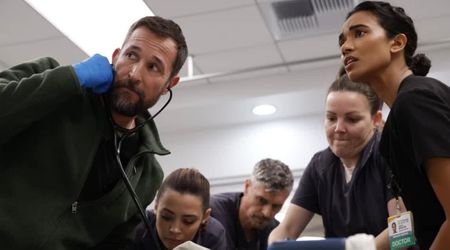'My Feet are Killing Me': What is Olmsted syndrome? Dr Sarah Haller deals with a rare case

When it comes to medical reality shows, doctors often change lives. But for the cast of 'My Feet are Killing Me', Dr Brad Schaeffer, Dr Ebonie Vincent and Dr Sarah Haller do much more - they save lives.
Throughout the show, there is a little the doctors haven't dealt with. From webbed feet, Proteus Syndrome and even potentially cancerous growths, they've seen it all. But now, Dr Haller is dealing with a once-in-a-lifetime case.
READ MORE
'Dr Pimple Popper': Sandra Lee tries 'not to be intimidated' by Roger's rhinophyma case
What happened to Alisha Williams' feet? A look at 'My Feet Are Killing Me' star's accident
In the latest season, each of the doctors are seen taking on exceptionally unique cases, the likes of which they haven't seen before. This week, fans are introduced to 24-year-old Rebecca Rhodes from Villa Rica, Georgia, who visits Dr Haller's clinic with her mother, Karen. Rebecca has a very rare genetic disease known as Olmsted Syndrome. It is so rare that she is only the eighth known case worldwide to have this disease. For Rebecca, this disease has truly taken her youth away from her, seeing that it began to manifest at the age of 5. It started as painful blisters on the sole of her feet and then transformed into hard callouses. Shortly after entering school, she used a wheelchair as walking proved too painful for her.
What is Olmsted syndrome?
Olmsted syndrome is a rare congenital disorder that causes thickening of the skin, often resulting in growths or callouses. These callouses often grow on palms, the soles and even around the mouth. People with Olmsted syndrome are also at risk of infections and skin cancer. For Rebecca's case in particular, Dr Sarah figured that the best course of action was to shave down the callouses as much as she could in the clinic. Rebecca usually has to get it surgically removed by visiting the OR, seeing nerve endings in the callouses. Dr Sarah's plan was to shave it down as much as possible and hopefully prevent it from growing any further through regular treatments.
Is there a cure for Olmsted syndrome?
As Dr Sarah explained it, she never has and probably will never come across another patient such as Rebecca, seeing that the condition is that rare and she's only seen it in her medical textbooks. Concerning the cure, there isn't one yet, as the syndrome is still being studied. So, with no immediate cure to fix the issue, Dr Sarah planned to cut off the growth and hopefully trick Rebecca's body into preventing it from growing further. She managed to steadily chip away at the growing callouses, shaving it down to Rebecca's sole. Dr Sarah decided that she would take on the case, allowing Rebecca to visit her regularly for treatment instead of having to get them surgically removed. Rebecca was grateful for how Dr Sarah handled the case, seeing that surgery takes a physical toll on her and now she has a more accessible alternative.
Catch all-new episodes of 'My Feet Are Killing Me' on Wednesdays at 10 pm EST on TLC.










